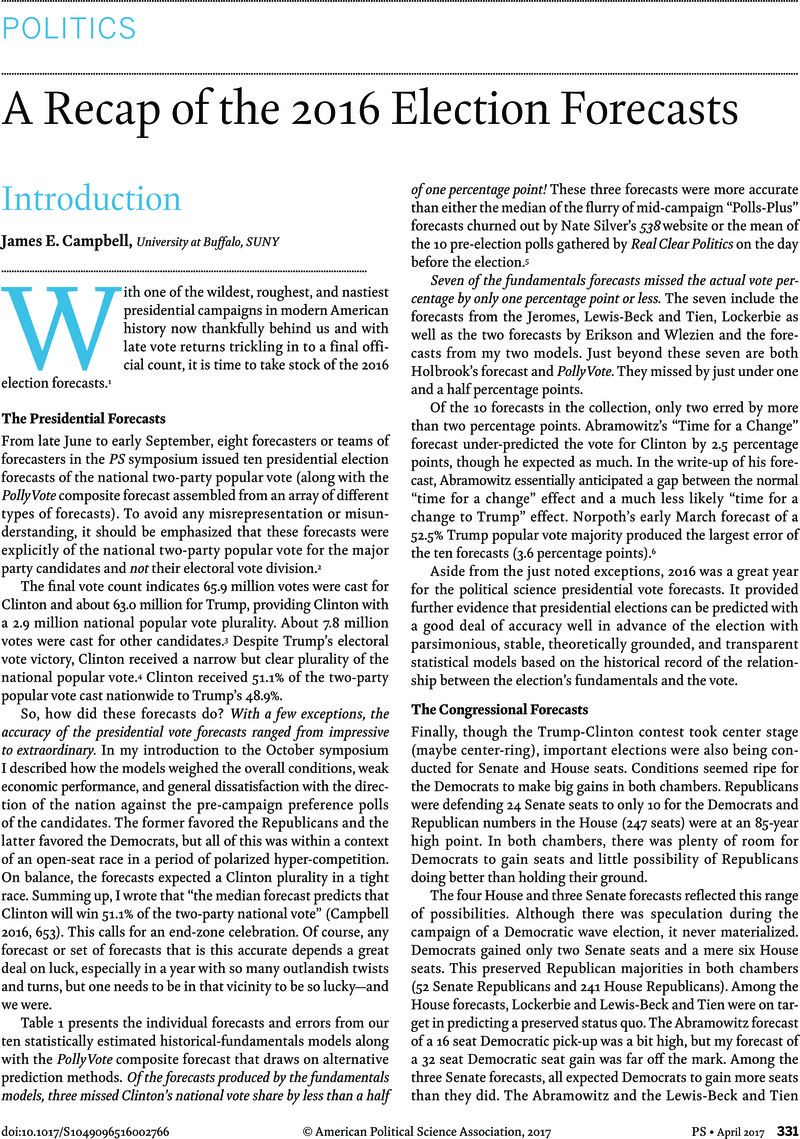Crossref Citations
This article has been cited by the following publications. This list is generated based on data provided by Crossref.
Donovan, Todd
and
Bowler, Shaun
2018.
Donald trump’s challenge to the study of elections, public opinion and parties.
Journal of Elections, Public Opinion and Parties,
Vol. 28,
Issue. 2,
p.
125.
Singh, Shane
Roy, Jason
and
Fournier, Patrick
2018.
The Effect of Opinion Polls on Political Information Seeking.
SSRN Electronic Journal ,
Comarela, Giovanni
Durairajan, Ramakrishnan
Barford, Paul
Christenson, Dino
and
Crovella, Mark
2018.
Assessing Candidate Preference through Web Browsing History.
p.
158.
Roche, Michael J.
and
Jacobson, Nicholas C.
2019.
Elections Have Consequences for Student Mental Health: An Accidental Daily Diary Study.
Psychological Reports,
Vol. 122,
Issue. 2,
p.
451.
Curini, Luigi
2021.
The integrity of the 2016 US Presidential Election: Exploring the possible impact of ideology on experts’ judgments.
Party Politics,
Vol. 27,
Issue. 1,
p.
81.
Feng, Guocheng
Chen, Kaihao
Cai, Huaiyu
and
Li, Zhijian
2023.
A Hybrid Method of Sentiment Analysis and Machine Learning Algorithm for the U.S. Presidential Election Forecasting.
p.
1495.
Tien, Charles
and
Lewis-Beck, Michael S.
2023.
Economics, COVID, Election Forecasting: Did Trump Escape Blame?.
American Politics Research,
Vol. 51,
Issue. 5,
p.
619.
Zilinsky, Jan
Tucker, Joshua A.
and
Nagler, Jonathan
2025.
The Trump Advantage in Policy Recall Among Voters.
American Politics Research,
Vol. 53,
Issue. 2,
p.
91.



